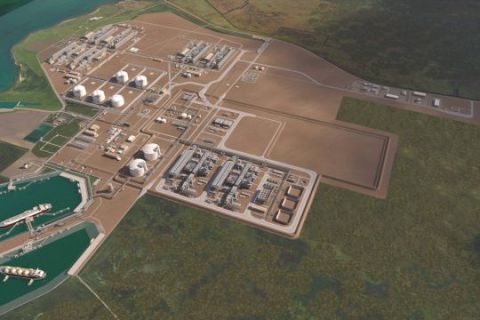When Jim Latimer was brought in as chief executive of Rand Energy in 1998, the company had filed for bankruptcy just four days before. Latimer's job was to reorganize Rand or get as much cash as possible for the company's assets. As a result, he learned several important lessons about negotiating during hard times. "There is a range of opportunities you can create during bankruptcy," he told the Houston Energy Finance Group recently. "Try to create a resolution that has something for everyone, and you'll get further down the road." Rand Energy was founded in 1997 by a promoter and a wealthy investor who wanted to create a $1-billion company in three years. They pursued high-risk exploration plays in Texas and Mississippi that had complex geology, difficult drilling requirements and high initial costs. The company had a knack for prospect identification, making four early discoveries. On June 30, 1998, things took a turn for the worse. Rand's Bazor 13-1 well in Mississippi blew out, starting a fire that burned for 21 days. The well cost about $25 million, and Rand had made essentially no vendor payments for its two-thirds share. Eventually, the well was completed as a producer, but the damage to the company had been done. Insurance covered about $3 million, but damage and other claims reached $15 million to $20 million. In October 1998, the company filed for bankruptcy. It had four high-rate producing wells among its 25 producers, and seven wells that were being drilled or completed. All seven targeted reservoirs were at least 16,500 feet deep, and Rand held at least 50% ownership in all but one of them. Latimer used cash from three debtor-in-possession loans to continue drilling and completion. Two ended up dry, and five provided major value additions for the company. He also oversaw four major property sales that brought in about $60 million, including two wells that netted more than $18 million to Rand's interest. Insurance claims added $3 million, and litigation resulting from the blowout is still pending. The secured lenders and lienholders on successful wells have or likely will recover very close to 100% on their claims, either immediately or in time. The recovery for the unsecured creditors depends on the outcome of the claims and litigation process, and could range from 5% to 75%. "We realized substantial value for our assets against a backdrop of $11 oil," said Latimer, who is no longer with Rand. "We built and retained value after filing by resolving disputes and selectively drilling and completing our wells, and by working hard to rebuild credibility with others." There were many lessons learned during this process, he added. Though it's not easy for a company to drill its way out of Chapter 11, continued selective investment in the drilling and completion program may be warranted even after filing. -Jodi Wetuski
Recommended Reading
Repsol Eyes Increasing Core US Upstream Business
2024-02-29 - Madrid-based Repsol SA will invest €$2.2 billion (US$2.38 billion) between 2024-2027 on its unconventional assets in the Marcellus and Eagle Ford as it focuses on increasing its core U.S. upstream business platform.
Despite LNG Permitting Risks, Cheniere Expansions Continue
2024-02-28 - U.S.-based Cheniere Energy expects the U.S. market, which exported 86 million tonnes per annum (mtpa) of LNG in 2023, will be the first to surpass the 200 mtpa mark—even taking into account a recent pause on approvals related to new U.S. LNG projects.
Everywhere All at Once: Woodside CEO Touts Current Global Portfolio
2024-03-05 - Meg O’Neill, the CEO of Australian energy giant Woodside Energy, is overseeing the “next wave” of growth projects around the globe, including developments in the Gulf of Mexico, offshore Senegal and further LNG expansion.
EQT’s Toby Rice: US NatGas is a Global ‘Decarbonizing Force’
2024-03-21 - The shale revolution has unlocked an amazing resource but it is far from reaching full potential as a lot more opportunities exist, EQT Corp. President and CEO Toby Rice said in a plenary session during CERAWeek by S&P Global.
Renewed US Sanctions to Complicate Venezuelan Oil Sales, Not Stop Them
2024-04-19 - Venezuela’s oil exports to world markets will not stop, despite reimposed sanctions by Washington, and will likely continue to flow with the help of Iran—as well as China and Russia.





